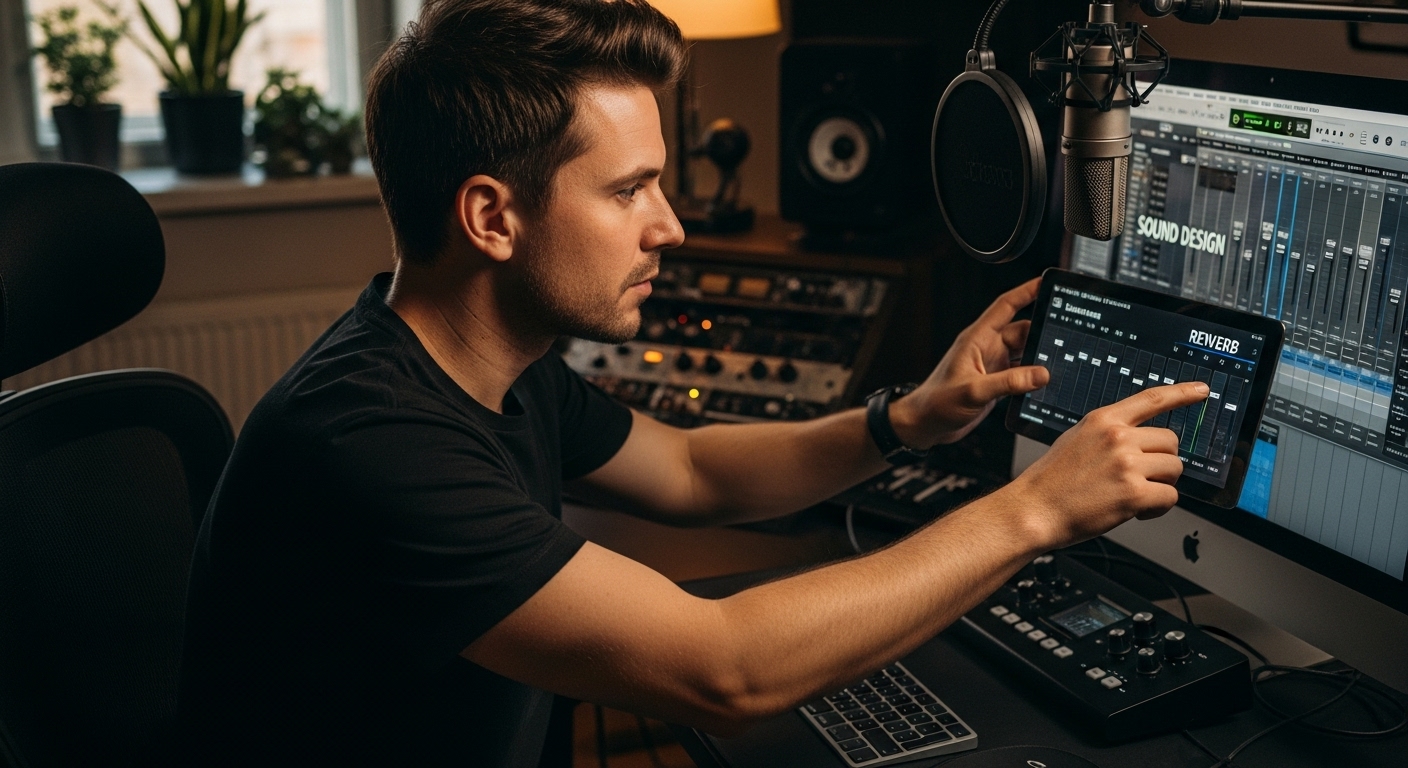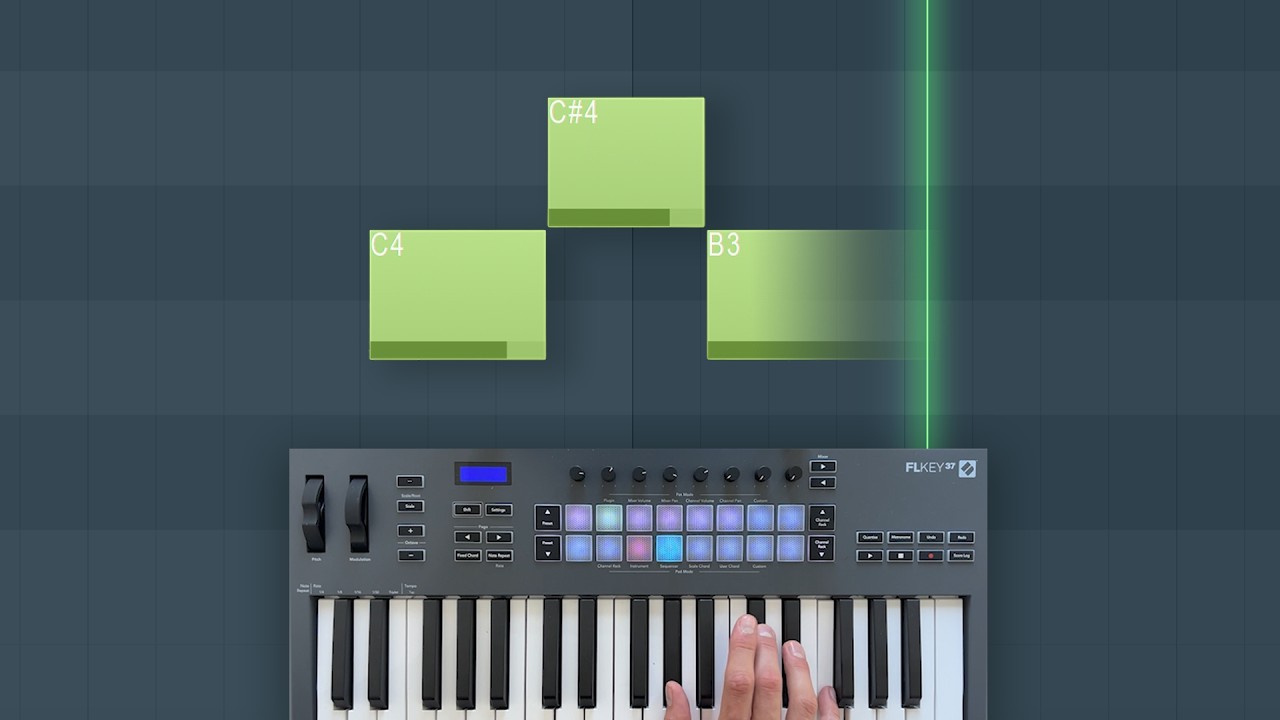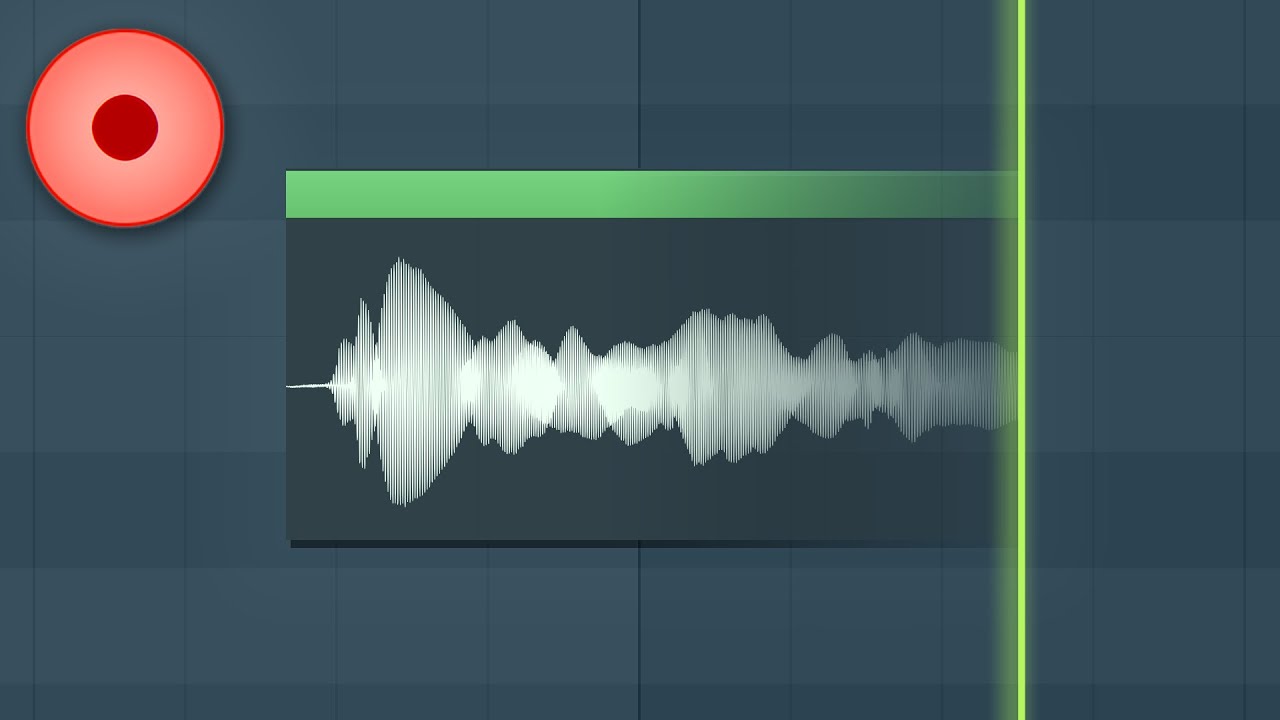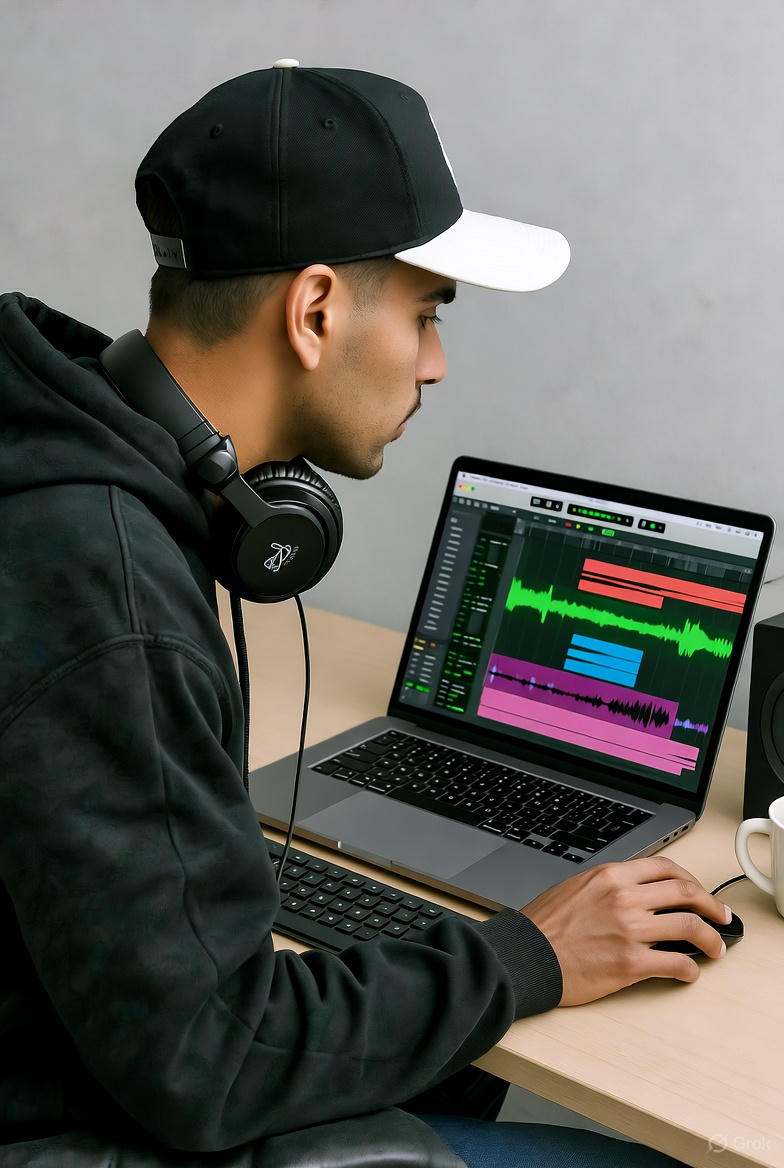!Let Us HELP YOU!
We have a lot of curated content on this blog.
Take this simple 20 second Quiz to Help You
Find The Exact Content You Are Looking For!
Audio effects shape every hit song you hear, turning simple recordings into unforgettable experiences. Here is what might surprise you. A single type of audio effect like reverb can make a vocal sound as if it was recorded in a stadium or a tiny closet depending on the settings. Most people imagine audio effects as subtle tweaks or shiny add-ons but these tools are actually the creative backbone of modern music, capable of changing emotion, storytelling, and even your favorite artist’s entire sound.
Table of Contents
-
Key Types Of Audio Effects And Their Functions
-
Frequency And Dynamic Transformation Effects
WEBSITE RESOURCES FOR MUSICIANS
Quick Summary
| Takeaway | Explanation |
| Audio effects enhance sound quality. | They improve clarity and add richness to recordings, making them more engaging for listeners. |
| Master categories for effective sound design. | Understanding time-based, frequency-based, dynamic, and modulation effects helps in selecting the right tools for production. |
| Use audio effects intentionally in music. | Strategic application can create desired emotional impacts and improve overall coherence in musical storytelling. |
| Integrate effects systematically in DAW. | A structured workflow for managing audio effects ensures technical precision and creative experimentation are balanced effectively. |
| Explore emotional storytelling through sound. | Manipulating effects can evoke feelings and enhance the narrative within music, capturing the listener’s attention. |
What Are Audio Effects and Their Purpose?
Audio effects are transformative tools that music producers use to modify and enhance sound recordings, creating unique sonic experiences that elevate musical compositions. These digital or analog processes manipulate audio signals, allowing producers to shape raw sound into something more compelling and emotionally resonant.
The Fundamental Role of Audio Effects
At their core, audio effects serve multiple critical purposes in music production. They are not merely technical additions but powerful creative instruments that help musicians express their artistic vision. Producers use these tools to solve acoustic challenges, create depth, add excitement, and fundamentally alter the character of sound.
Key Purposes of Audio Effects:
-
Enhance sound quality and clarity
-
Create unique sonic textures
-
Compensate for recording limitations
-
Add emotional depth to musical compositions
Producers can transform a basic recording into something extraordinary by strategically applying effects. For instance, reverb can simulate different acoustic environments, while compression can balance volume levels and add punch to a track. Learn more about advanced beat production techniques that leverage these powerful audio manipulation tools.
Categories of Audio Effects
According to SAE Institute, audio effects broadly fall into several fundamental categories:
-
Time-Based Effects: These manipulate the timing and spatial characteristics of sound, including reverb, delay, and echo.
-
Frequency-Based Effects: These alter the frequency content of audio signals, such as equalization (EQ) and filtering.
-
Dynamic Effects: These control the volume and dynamics of sound, including compression, limiting, and gating.
-
Modulation Effects: These create movement and variation in sound, like chorus, flanger, and phaser.
Understanding these categories helps producers select the right tools to achieve their desired sound, transforming raw recordings into polished, professional tracks that resonate with listeners.
The table below summarizes the main categories of audio effects discussed in the article and highlights their core functions in music production for quick reference.
| Audio Effect Category | Description | Typical Functions |
| Time-Based Effects | Manipulate timing and spatial properties of sound | Add depth, simulate environments, create echoes |
| Frequency-Based Effects | Alter the frequency content of audio signals | Shape tone, EQ, filter unwanted frequencies |
| Dynamic Effects | Control the volume and dynamic range of the sound | Compress, limit, gate for balance and punch |
| Modulation Effects | Add movement and variation to sound | Chorus, flanger, phaser for texture and interest |
![]()
Why Audio Effects Matter in Music Production
In the intricate world of music production, audio effects are not mere technical embellishments but essential tools that transform raw sound into polished artistic expressions. These powerful sonic manipulators enable producers to craft immersive soundscapes that transcend basic recording techniques, breathing life and character into musical compositions.
Creative Sound Sculpting
Audio effects represent a producer’s palette of sonic creativity. They allow musicians to move beyond traditional recording limitations, enabling unprecedented sound design and emotional storytelling. By strategically applying effects, producers can create unique textures that distinguish their music from conventional recordings.
Critical Creative Dimensions:
-
Translate abstract musical ideas into tangible sonic experiences
-
Compensate for acoustic recording imperfections
-
Develop distinctive musical signatures
-
Enhance emotional resonance of musical compositions
Explore advanced beat production techniques that demonstrate how professional producers leverage audio effects to elevate their musical narratives.
Technical and Artistic Significance
According to Encyclopaedia Britannica, audio effects play a dual role in music production. They serve both technical and artistic functions, helping producers address acoustic challenges while simultaneously expanding creative possibilities. From correcting frequency imbalances to creating immersive spatial environments, these tools are fundamental to modern music production.
Primary Production Functions:
-
Correct frequency inconsistencies
-
Create spatial depth and dimension
-
Balance dynamic ranges
-
Generate unique sonic textures
Producers who master audio effects transform simple recordings into complex, emotionally compelling musical experiences. These tools bridge technical precision with artistic expression, allowing musicians to communicate more deeply and powerfully through sound.
How Audio Effects Influence Sound Design
Sound design represents a sophisticated artistic process where audio effects serve as transformative instruments, enabling producers to craft unique sonic landscapes that transcend traditional recording techniques. These powerful tools allow musicians to manipulate sound waves, creating immersive auditory experiences that communicate emotion and artistic intent far beyond raw instrumental recordings.
Spatial and Dimensional Manipulation
Audio effects fundamentally alter sound perception by introducing complex spatial and dimensional characteristics. Producers can simulate acoustic environments, create depth, and generate movement within a musical composition. Techniques like reverb and delay transform flat recordings into three-dimensional sonic experiences, adding layers of complexity and emotional resonance.
Key Spatial Design Techniques:
-
Create artificial acoustic environments
-
Generate perceived distance between sound elements
-
Simulate natural and synthetic sound spaces
-
Develop intricate sonic textures
Explore advanced sound design strategies that demonstrate professional audio manipulation techniques.
Emotional and Narrative Sound Sculpting
Audio effects function as powerful storytelling tools, enabling producers to communicate complex emotional narratives through sound manipulation. By strategically applying effects like distortion, modulation, and filtering, musicians can evoke specific moods, create tension, and guide listener emotional experiences.
According to Stanford University’s Center for Computer Research in Music and Acoustics, digital signal processing allows unprecedented creative expression in sound design. Producers can now transform ordinary sounds into extraordinary sonic experiences that challenge traditional musical boundaries.
Emotional Design Strategies:
-
Generate tension and release
-
Emphasize rhythmic and melodic elements
-
Create sonic metaphors
-
Enhance musical storytelling
Mastering audio effects transforms sound design from technical manipulation to a nuanced art form, where producers become sonic architects crafting immersive auditory experiences that resonate deeply with listeners.

Key Types of Audio Effects and Their Functions
Audio effects represent a complex ecosystem of sonic manipulation tools that enable music producers to transform raw sound into sophisticated musical expressions. Each effect type serves a unique purpose, providing producers with precise control over sound characteristics, emotional resonance, and overall sonic quality.
Time and Space Manipulation Effects
Time-based audio effects fundamentally alter sound perception by introducing temporal and spatial dimensions to recordings. These effects create depth, movement, and complex sonic environments that extend beyond traditional recording techniques.
Primary Time and Space Effects:
-
Reverb: Simulates acoustic environments and adds spatial depth
-
Delay: Creates rhythmic echoes and sound repetitions
-
Echo: Produces distinct sound reflections with varying intensities
-
Chorus: Generates rich, layered sound textures
Explore advanced audio effect techniques to understand professional sound manipulation strategies.
Frequency and Dynamic Transformation Effects
Frequency and dynamic effects allow producers to sculpt sound at its most fundamental level, controlling tone, volume, and sonic character. These tools enable precise audio signal modifications that can dramatically reshape musical elements.
According to Encyclopaedia Britannica, electronic music production relies heavily on these transformative effects to create unique sonic landscapes.
Critical Frequency and Dynamic Effects:
-
Equalization (EQ): Adjusts specific frequency ranges
-
Compression: Controls volume dynamics and adds punch
-
Filtering: Removes or emphasizes specific frequency bands
-
Limiting: Prevents audio signal from exceeding maximum volume
Understanding these audio effects transforms music production from simple recording to sophisticated sound design, giving producers unprecedented creative control over their musical expressions.
This table provides a feature overview of key audio effects types and their specific uses in music production, helping producers quickly identify which tool suits their creative needs.
| Effect Type | Core Feature | Typical Use in Music Production |
| Reverb | Simulates acoustic spaces for spatial depth | Adds room/stadium ambience to vocals/instruments |
| Delay | Creates sound repetitions and rhythmic echoes | Builds space, accentuates rhythmic patterns |
| Echo | Produces distinct, decaying sound reflections | Generates dramatic or atmospheric sound elements |
| Chorus | Layers slightly detuned duplicates | Thickens sound, creates rich textures |
| EQ | Adjusts individual frequency bands | Shapes tonal balance, clarifies mix |
| Compression | Controls and evens out audio dynamics | Adds punch, balances volume, prevents clipping |
| Filtering | Removes/emphasizes select frequency bands | Eliminates noise or enhances desired frequencies |
| Limiting | Caps maximum volume to avoid distortion | Protects from overload, tightens mix output |
Integrating Audio Effects in Your Music Workflow
Successful music production requires more than technical knowledge. It demands a strategic approach to integrating audio effects that transforms raw recordings into professional soundscapes.
Producers must develop a systematic workflow that allows creative experimentation while maintaining technical precision and sonic clarity.
Strategic Effect Application Principles
Integrating audio effects is not about applying random processing but creating intentional sonic transformations. Producers must understand each effect’s unique characteristics and how they interact within the broader musical context. This requires a nuanced approach that balances technical skill with artistic intuition.
Essential Workflow Integration Strategies:
-
Establish a consistent signal chain order
-
Apply effects with purposeful intent
-
Maintain dynamic range and audio quality
-
Experiment systematically
Discover advanced production techniques that elevate your audio effect integration skills.
Digital Audio Workstation (DAW) Effect Management
Modern digital audio workstations provide sophisticated platforms for organizing and applying audio effects. According to University of Sussex research, effective DAW workflow management involves understanding virtual instrument integration, sound processing techniques, and mastering tools.
DAW Effect Management Best Practices:
-
Use effect sends and return tracks
-
Create effect signal path templates
-
Utilize track and bus routing effectively
-
Implement non-destructive effect processing
Successful audio effect integration requires continuous learning, technical understanding, and creative exploration. Producers who master these principles can transform ordinary recordings into extraordinary musical experiences.
Turn Your Sound Experiments Into Studio-Quality Beats
Struggling to master audio effects and take your tracks to the next level? You are not alone. Many music producers get stuck when trying to turn raw beats into professional productions. Whether you want to use compression for punch, shape frequencies with EQ, or add depth with reverb, knowing where to start can feel overwhelming. This guide introduced you to foundational ideas like spatial effects, dynamic control, and DAW organization. Now it is time to put those concepts into action and actually polish your sound.
Ready to transform what you have learned into real music? Visit howtomakebeatsblog.com for hands-on tutorials, DAW-specific guides, and expert reviews on everything from MIDI keyboards to drum kits. Discover mixing and mastering tips that help you build clarity and depth around your audio effects. If you are aiming to expand your skill set, check out our advice on how to make instrumentals and get practical tricks for any genre or setup. Stop waiting to create the sound you truly want. Take action now and start pushing your beats to professional standards.
Frequently Asked Questions
What are audio effects and their main purposes in music production?
Audio effects are tools used by music producers to modify and enhance sound recordings. Their main purposes include enhancing sound quality, adding unique textures, compensating for recording limitations, and adding emotional depth to musical compositions.
What are the main categories of audio effects?
The main categories of audio effects include time-based effects (like reverb and delay), frequency-based effects (such as equalization), dynamic effects (like compression), and modulation effects (such as chorus and flanger). Understanding these categories helps producers select the right tools for achieving desired sound.
How do audio effects impact sound design?
Audio effects significantly influence sound design by allowing producers to create complex spatial characteristics and manipulate emotional narratives within a composition. This enables the development of immersive auditory experiences that go beyond traditional recording techniques.
What strategies should I use to integrate audio effects into my music workflow?
To effectively integrate audio effects, establish a consistent signal chain order, apply effects with intention, maintain dynamic range and audio quality, and experiment systematically. Utilizing a digital audio workstation (DAW) can also aid in managing and organizing effects effectively.



